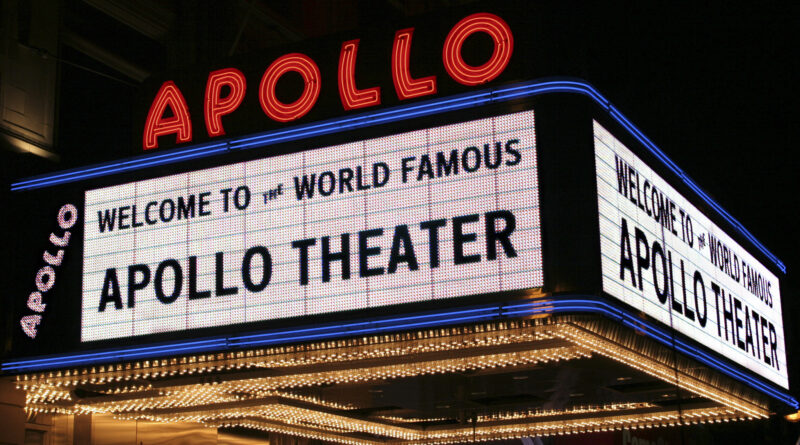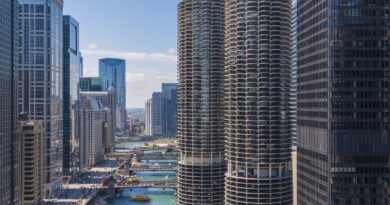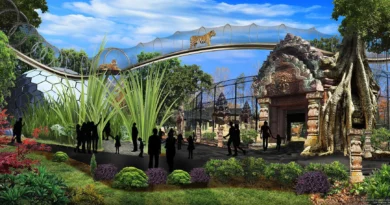20 Fun Facts About Harlem New York
Harlem, New York, is a neighborhood steeped in history, culture, and artistic expression. Over the years, it has been the birthplace of movements, the home of legends, and a symbol of African American pride and resilience. Here are 25 fun facts about Harlem that highlight its rich heritage and continuing influence.
1. Harlem’s Origins
Harlem was originally settled by the Dutch in 1658 and was named after the city of Haarlem in the Netherlands. This historic neighborhood was initially a rural village before evolving into the vibrant urban community we know today.
2. The Harlem Renaissance
The Harlem Renaissance was a cultural, social, and artistic explosion that took place during the 1920s and 1930s. It was a time when African American writers, artists, musicians, and thinkers converged in Harlem, producing an extraordinary outpouring of creativity that profoundly influenced American culture.
3. The Apollo Theater
The Apollo Theater is one of Harlem’s most iconic landmarks. Opened in 1914, this historic venue has hosted some of the biggest names in music, including Ella Fitzgerald, James Brown, and Michael Jackson. It remains a cornerstone of Harlem’s cultural life, famous for its Amateur Night, where new talent gets a chance to shine.
4. Harlem’s Jazz Heritage
Harlem is often called the birthplace of jazz, and for good reason. Legendary musicians like Duke Ellington, Louis Armstrong, and Billie Holiday made Harlem their musical home, performing at clubs such as the Cotton Club and Minton’s Playhouse, which became epicenters of the jazz world.
5. The Cotton Club
The Cotton Club was one of Harlem’s most famous nightclubs during the Prohibition era. It was a whites-only club, but it featured some of the best African American entertainers of the time, including Duke Ellington and Cab Calloway. The club played a crucial role in popularizing jazz and was a key site of the Harlem Renaissance.
6. Langston Hughes’ Harlem
Poet Langston Hughes, a leading figure of the Harlem Renaissance, often wrote about life in Harlem. His works, including “The Weary Blues” and “Harlem,” captured the spirit and struggles of the African American community, solidifying his place as one of the most important literary voices of the 20th century.
7. The Studio Museum in Harlem
The Studio Museum in Harlem was founded in 1968 and is dedicated to showcasing African American artists and art of the African diaspora. It has become a central hub for contemporary black art and has helped launch the careers of numerous artists.
8. Harlem’s Gospel Tradition
Harlem is renowned for its rich gospel music tradition. Churches like the Abyssinian Baptist Church and the Mother African Methodist Episcopal Zion Church have been central to the community, offering spiritual and musical inspiration. Sunday gospel services in Harlem are a must-experience for visitors, showcasing the power and passion of this musical form.
9. Strivers’ Row
Strivers’ Row is a historic district in Harlem, known for its elegant row houses built between 1891 and 1893. These homes were initially intended for upper-middle-class white residents but became a symbol of success for African American professionals during the Harlem Renaissance.
10. The Schomburg Center
The Schomburg Center for Research in Black Culture is one of the leading institutions dedicated to the preservation and study of African American, African Diaspora, and African experiences. Established in 1925 as part of the New York Public Library, it houses a vast collection of manuscripts, books, and artwork.
11. Harlem Week
Harlem Week began in 1974 as a one-day event to celebrate the neighborhood’s rich history and culture. It has since expanded into a month-long festival, featuring music, dance, food, and cultural events that attract visitors from around the world.
12. The Great Migration
The Great Migration, which took place from the early 20th century to the 1970s, saw millions of African Americans move from the rural South to urban areas in the North, including Harlem. This migration significantly shaped the cultural and demographic landscape of Harlem, making it a center of African American life.
13. Marcus Garvey’s Influence
Marcus Garvey, a prominent Black nationalist leader, established the Universal Negro Improvement Association (UNIA) in Harlem in the 1920s. His activism and vision for African American self-reliance and pride left a lasting legacy on the community and the broader civil rights movement.
14. Famous Harlem Residents
Harlem has been home to many notable figures, including civil rights leader Malcolm X, musician Duke Ellington, and author Zora Neale Hurston. These individuals and many others contributed to the rich cultural and social fabric of the neighborhood.
15. The Harlem Globetrotters
Although originally founded in Chicago, the Harlem Globetrotters basketball team took on the Harlem name as a tribute to the neighborhood’s significance in African American culture. The team became famous worldwide for their basketball skills and entertaining style.
16. Sylvia’s Restaurant
Sylvia’s Restaurant, founded by Sylvia Woods in 1962, is often referred to as the “Queen of Soul Food.” This legendary Harlem eatery has become a culinary landmark, known for its fried chicken, collard greens, and other Southern-style dishes.
17. The Harlem YMCA
The Harlem YMCA, established in 1932, has been a vital community center, offering programs and services that promote health, education, and social welfare. It has played a significant role in supporting the neighborhood’s youth and fostering community engagement.
18. Harlem River Drive
Harlem River Drive is a scenic highway that runs along the Harlem River, offering beautiful views of the water and the surrounding area. The drive is not just a convenient route but also a reminder of Harlem’s connection to New York City’s larger geography and infrastructure.
19. The Harlem Meer
The Harlem Meer is a picturesque lake located in the northern part of Central Park. This tranquil spot offers a peaceful retreat from the bustling city and is a popular location for fishing, picnicking, and enjoying nature.
20. Harlem’s Hip-Hop Roots
Harlem has played a pivotal role in the birth and evolution of hip-hop culture. Artists like Big L, Cam’ron, and A$AP Rocky hail from Harlem, contributing to the neighborhood’s reputation as a hotbed for musical innovation and street culture.
21. The National Jazz Museum
The National Jazz Museum in Harlem is dedicated to preserving and celebrating the history of jazz music. Founded in 1997, the museum offers exhibitions, performances, and educational programs that highlight the genre’s enduring impact on American culture.
22. The Lenox Lounge
The Lenox Lounge was a historic jazz club that operated from 1939 until its closure in 2012. Located on Lenox Avenue, it was a gathering place for jazz greats and a symbol of Harlem’s rich musical heritage. The iconic zebra-striped interior became synonymous with Harlem’s nightlife.
23. Harlem’s Murals
Harlem is home to many vibrant murals that depict the neighborhood’s history, culture, and heroes. These public artworks serve as a form of expression and pride, telling the story of Harlem’s past and present through powerful visual narratives.
24. The Impact of Gentrification
Over the past few decades, Harlem has undergone significant changes due to gentrification. While this has led to economic revitalization and new developments, it has also sparked debates about the displacement of long-time residents and the preservation of Harlem’s cultural identity.
25. Harlem’s Future
As Harlem continues to evolve, it remains a neighborhood rich in culture, history, and potential. The community’s ongoing efforts to celebrate and preserve its heritage while embracing change ensure that Harlem will remain a vibrant and dynamic part of New York City for years to come.
Discover more from City Towner
Subscribe to get the latest posts sent to your email.




